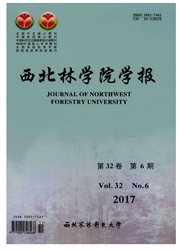

 中文摘要:
中文摘要:
湖是我国的五大淡水湖之一,正面临着严重的水体富营养化问题。随着点源污染得到逐步治理,农田非点源污染已成为太湖水体富营养化的主要污染源。概述了太湖流域农田生态系统管理与非点源污染控制,指出随着流域内化肥用量以及农田氮磷盈余量的不断增加,流域内农田非点源污染负荷将进一步加大。农田中的氮磷通常通过农田排水和地表径流等途径进入地表水体。为有效控制农田非点源污染,应实施科学合理的农田生态系统管理:避免氮磷肥的过量使用,适当增施有机肥和钾肥,推广应用测土配方施肥,加强微生物肥和控效肥等新型肥料的研制和推广,实行保护性耕作,合理安排农事活动时间,以此减少非点源污染物形成;调整土地利用方式,优化土地资源配置,对潜在的非点源污染物进行有效的截留。
 英文摘要:
英文摘要:
Taihu Lake,as one of the five largest freshwater lakes in China,is presently confronted with accelerated water eutrophication. After the control of point pollution, farm non-point source pollution due to wide application of fertilizers and pesticides has become a major factor affecting the water quality in Taihu Lake. Farm ecosystem control and non-point source pollution in Taihu Lake area were reviewed in this paper. It was pointed out that, the loads of farm non-point source pollutants will continue to increase, due to the increasing use of chemical fertilizers and more surpluses of nitrogen and phosphorus in the farm of this region. Generally, nitrogen and phosphorus in the field are transported to surface water by means of farm drainage and surface runoff and so on. To control the non-point source pollution, the function of harness measures of farm ecosystem management was analyzed. Measures, such as soil testing and fertilizer recom- mendation,conservation tillage and alternative land use regulations,may play a key role in mitigating farm non-point source pollution,so as to provide some basis for controlling farm non-point source pollution.
 同期刊论文项目
同期刊论文项目
 同项目期刊论文
同项目期刊论文
 期刊信息
期刊信息
